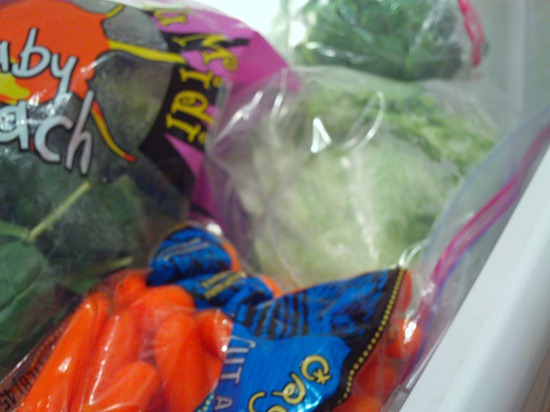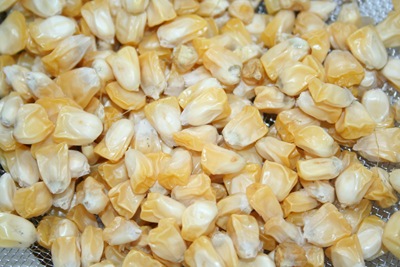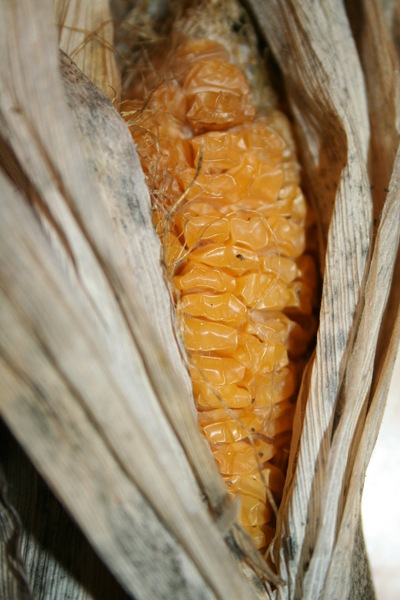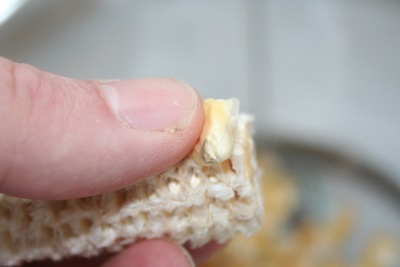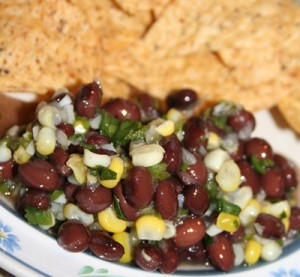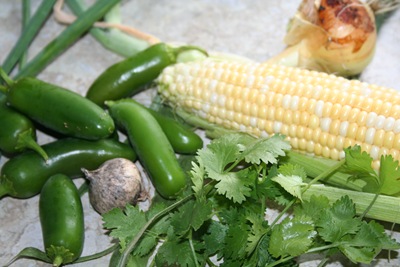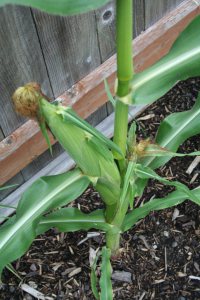How to store your Fruits and vegetables
13.3 years ago corn, herbs, peas, peppers, spinach, storing, tomato, vegetables
Whether it is to preserve your harvest from your garden or to help extend the life of the expensive produce you purchased from your local grocery store or farmers market, a little knowledge can help keep your veggies tasty and even stretch out a couple of extra days before becoming compost.
The basic idea is pretty simple, think about where your produce is stored in the grocery store and then do the same thing at home. For example they store carrots in a refrigerated display case…so you should store yours in your refrigerator. They store their onions at room temperature so you would think it would be best to do the same…reality is they are best to be stored between 55-65 degrees. During the winter time my room temperature is probably in the top part of that range but majority time my indoor temperatures will be much higher. Depending on the age of your house, you may have a root cellar which helps to create these ideal conditions for that pesky produce that is too cold in the refrigerator but too warm in a heated house. For the rest of us find a nice cool location in your house such as garage or spot next to a window (at least during the wintertime) otherwise you may be reducing the quality and viability of your produce.
Below is a list of the recommended storing temperatures for fruits and vegetables:
Vegetables
FRUIT
How to save corn seeds (Kernels)
14.5 years ago corn, harvest, seed saving, seeds
Corn is one of those crops I really don’t have space to grow but still like to try every year. This past year I only had one ear that made it to maturity, in the plants defense we have a very hot summer and I didn’t have the most consistent watering schedule so I am to blame for most of their demise. Given I used the last of my corn seed this year and wanting to make the best out a bad situation, I decided to use this ear for seeds for next year.
I decided to go the natural route and simply let the corn stay on the stalk until I was ready to pull up my corn stalks my wife got tired of looking at our dead corn stalks in the backyard which turned out to be yesterday (October 31st) As you can see from the picture above the corn kernels have dried out pretty well, though still contain a little moisture.
To remove the kernels I started by braking the cob in half and then starting where I split the cob pushing the loose kernels off with my thumb starting from one end to the other. Once I have this first row off it should be pretty easy to attack these kernels at any angle.
Lastly I layered the kernels in a single row in an open ended brown lunch bag to allow air flow to allow the remaining moisture to be removed. I put the bag on top of our cabinets in the kitchen and will add them to a homemade paper seed packet after a few weeks or drying (or when I remember they are up there more like a few months late) then store in the refrigerator until time for planting next year.
Now I have more seeds than I probably will ever need for a few years and hopefully will have better luck (or at least remember to water them better) next year.
Tags: cheap, garden seeds, outdoor plants, vegetables
Doing recon at the local farmers market
14.7 years ago corn, farmers market, garden planning, garlic bulbs
Your mission, should you decide to accept it is to infiltrate a local farmers market to gain intelligence to help aid your personal garden.
Sure, the farmers market is a great place to find some fresh food you can’t or didn’t have time/space to grow in your garden. It is also a great place to get seeds/starts for your garden. It is also a great resource to figure out how various fruits/vegetables grow in your area.
Even if you are growing everything you want/need in your own garden a quick stop at your farmers market can help you check out your competition and see for example in my case, “hey their garlic grew just as bad as mine this year.”
This is also a good time to try out new fruits and vegetables you are thinking of growing next year. There is nothing worse than growing a bed full of arugula and figure out at that point you hate the stuff. If you are lucky enough you might even get a meal and some seeds to plant with next year depending on you seed saving ability.
Now as always you don’t want to blow your cover while doing surveillance, so make sure you have a good cover store. In my case I used a few people known as “my wife and daughters” to appear less conspicuous. You can even use techniques of taking a picture of your “daughter” to get some recon picture of their products for further analysis.
In the end it looks like my little spy helpers had a good time and we even contributed a little to the local farmers economy and got the secret ingredient to CVG Black Bean and Corn Salsa Recipe (ok, it was corn).
This post will self destruct in 10 seconds (sorry had to say it)
Tags: cheap, garden seeds, garlic bulbs, outdoor plants, salsa garden, vegetables
Black Bean and Corn Salsa Recipe
14.8 years ago corn, peppers, recipe, salsa
My jalapeños peppers have been growing like crazy and I have had to start harvest to prevent the plants from stop producing. Given my tomatoes are still green I have been itching to do something with them, I decided to make some corn salsa. Given I couldn’t find a recipe that matched the ingredients I had on hand I decided to make my own.
CVG Black Bean and Corn Salsa Recipe
- 2 ears of corn (1-1/2 cups frozen corn)
- 1 small onion (chopped)
- 1/4 cup chopped cilantro
- 1/4 cup sliced green onions
- 2-3 cloves of garlic (chopped)
- 1/4 cup white vinegar
- 3 T sugar
- 1 chopped seeded jalapeño
- 1 chopped unseeded jalapeño
- 1-1/2 cups black beans (canned)
Directions: Cook corn for 2 minutes in boiling water and submerge in ice cold ice water. This helps stop the corn from cooking any more and also make handling while cutting the kernels a little more pleasant. Cut off kernels and add to bowl. Chop/slice remaining ingredients and add to bowl, stir, and refrigerate and serve chilled.
If you like your salsa a little spicier leave both pepper seeded.
Tags: cilantro, garden seeds, garlic bulbs, led, outdoor plants, pepper plants, salsa garden, tomato plants
When to pick sweet corn
I had to look up this answer myself since this is the first year I have grown sweet corn (Growing Challenge), here is the advice I found online:
- When the tassels turn dark brown
- When the juice from kernels are milky white and soft
- From GardenDesk, corn is ready when the raccoons eat it.
From my personal experience, use tassel color to determine if you should even bother checking if it is ready. Use the kernel color to determine if should actually pick it, since when I previous tried just by tassel color it definitely needed another week of growth.
Does anyone else have any proven techniques to pick that perfect ear of corn?
Tags: cheap, vegetables
Corn knee-high by the Fourth of July
15.8 years ago corn

In Wisconsin (and other states I presume) they say corn should be “knee-high by the Fourth of July” Given today is July 4th, I really hope who ever came up with that phrase was pretty short since in my garden in Washington it is barely up to my ankle.
